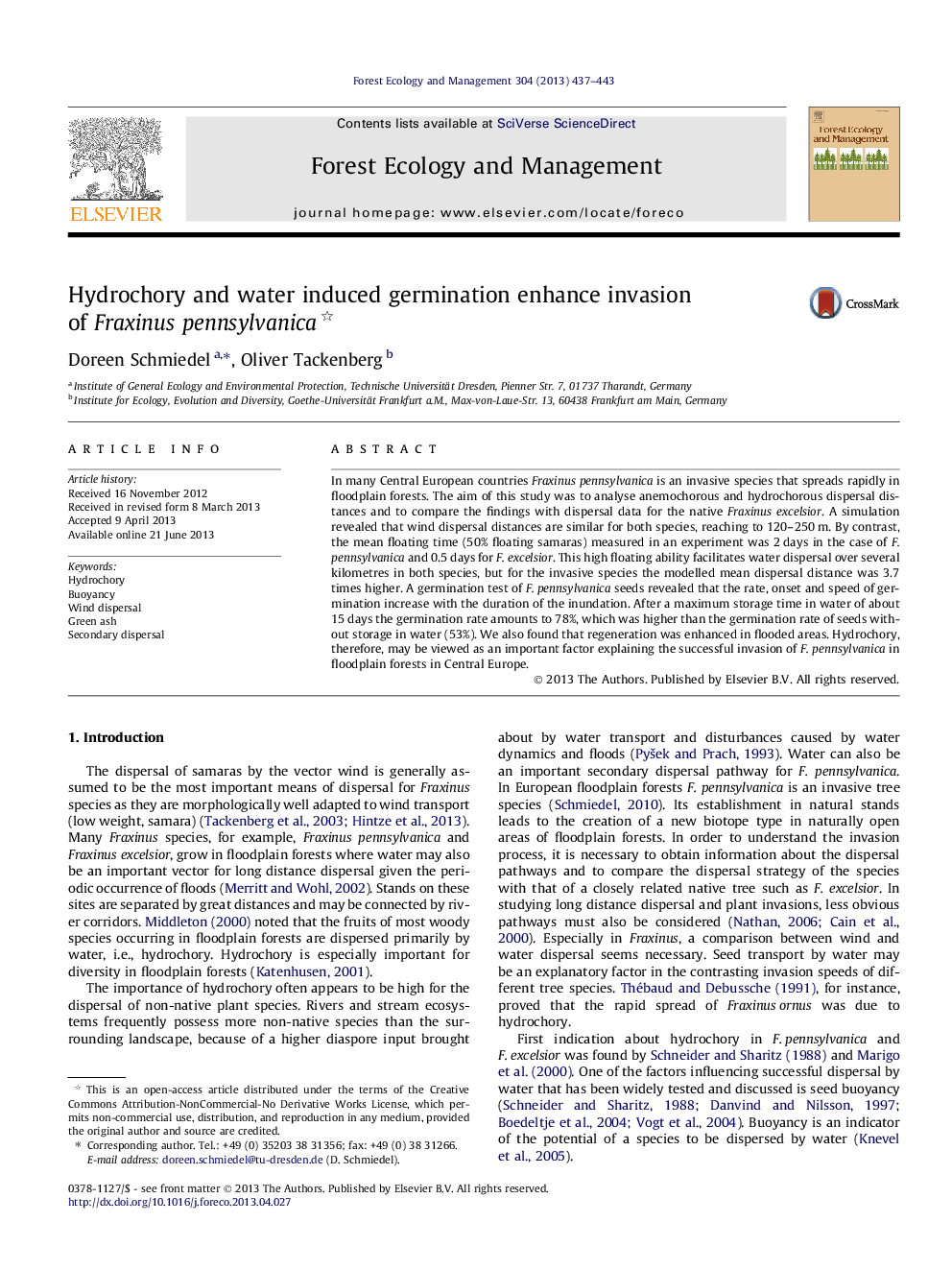| Article ID | Journal | Published Year | Pages | File Type |
|---|---|---|---|---|
| 6544340 | Forest Ecology and Management | 2013 | 7 Pages |
Abstract
In many Central European countries Fraxinus pennsylvanica is an invasive species that spreads rapidly in floodplain forests. The aim of this study was to analyse anemochorous and hydrochorous dispersal distances and to compare the findings with dispersal data for the native Fraxinus excelsior. A simulation revealed that wind dispersal distances are similar for both species, reaching to 120-250 m. By contrast, the mean floating time (50% floating samaras) measured in an experiment was 2 days in the case of F. pennsylvanica and 0.5 days for F. excelsior. This high floating ability facilitates water dispersal over several kilometres in both species, but for the invasive species the modelled mean dispersal distance was 3.7 times higher. A germination test of F. pennsylvanica seeds revealed that the rate, onset and speed of germination increase with the duration of the inundation. After a maximum storage time in water of about 15 days the germination rate amounts to 78%, which was higher than the germination rate of seeds without storage in water (53%). We also found that regeneration was enhanced in flooded areas. Hydrochory, therefore, may be viewed as an important factor explaining the successful invasion of F. pennsylvanica in floodplain forests in Central Europe.
Related Topics
Life Sciences
Agricultural and Biological Sciences
Ecology, Evolution, Behavior and Systematics
Authors
Doreen Schmiedel, Oliver Tackenberg,
